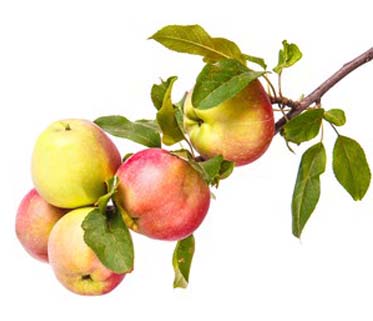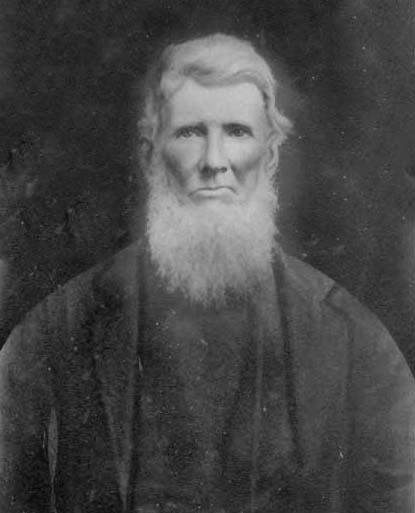Historical
Reminiscing with Robert B. Hitchings
Copyright.
All rights reserved.
TALKING ABOUT APPLES

Isn’t it amazing how a simple article can bring back so many fond memories? Going through my small library, I found two interesting articles tucked away in a folder that I had saved many years ago on the subject of apples.
Apples have been part of the American diet since colonial times. Today we have so many varieties of apples at our super-markets. My favorite is the Golden Delicious apple, the yellow apple that stands so bright and shiny along with the Red Delicious, McIntosh, Stayman, and Roma apples in the store.
From the time as a mere boy, I remember the old crabapple tree at 1508 Buckingham Avenue, in Edgewater. I remember a boy named Donald Chipman who lived in the small, one story house. Most of all I remember the large crabapple tree that stood in front of their yard; beautiful in the spring with its dazzling and breathtaking blossoms. But around the fall and winter months one could see the ugly brown, red, rotten crabapples lying on the ground. I also remember the sour smell around the yard. But most of all I remember Donald’s mother gathering up crab-apples to bake. A few years later the house was sold and a Robert Sears (Home Federal & Savings & Loan) bought the house in 1960. He would raise the roof and doubled the size of the house. The large Crab-apple tree on Buckingham Avenue that stood so firm and tall in the front yard is just a memory now.
My Great Aunt Alma Knight Whitehurst (1889-1985) (Grandmother Hitchings sister) was always talking and writing about the Albemarle Pippin apples in her letters to Norfolk. As a teenager she would bring back Albemarle Pippin apples from old Princess Anne County, Virginia, along with scuppernong grapes. These Princess Anne country Albemarle Pippin apples were quite popular and used for baking with folks here in the area. Interestingly, George Washington and Thomas Jefferson also grew these apples in their orchards.
But talking about apples, I can remember as a small boy the 1948 story of Johnny Appleseed, a cartoon by Walt Disney. This animated, colored, cartoon showed Johnny Appleseed traveling in the countryside planting apples seeds throughout our west. With his Bible, bag of apple seeds and his tin pot hat he was truly an American folk hero. Like so many of our folk hero’s he has fallen in the lost pages of time.
Johnny Appleseed better known as John Chapman (1774-1845) was a pioneer, nurseryman and missionary who planted apple seeds throughout the countryside of Massachusetts, Pennsylvania, Ohio, Indiana, Illinois, Ontario and West Virginia. He roamed the countryside barefooted planting apple seeds, was always a welcome guest by the pioneers but he never slept in their homes. The barn was his place to sleep. Even in winter he had no shoes and his name became legendary here in America. The Indians regarded him with awe, but they listened to his sermons and planted the apple seeds he gave to them. Like St. Francis of Assisi, Johnny Appleseed loved the wilderness and conversed with the birds and made friends with the animals.
As an adult, I remember taking the family to Martin’s farm at Knots Island to pick apples. They always seem to have a variety of apples and an abundance of ripe apples especially on the ground. Baskets were provided and we always came back with a beautiful harvest of apples.
And whenever I was up near Charlottesville, Virginia, with my friends, I always stopped off at Pugh’s Farm in Gore, Virginia, and bought a variety of delicious apples. They have always had a nice road side stand, selling their apples as well as a variety nice fruits and honey.
But the other article on apples I found most interesting was about the famous Taliaferro apple of Virginia. This is one apple so many nurserymen and historians are always searching for. It’s the Holy Grail of lost apples and is known as the lost Taliaferro (pronounced, “Taw-Liver”). Unfortunatley, many thousands of apple varieties of the lost apple have been found since colonial times, but not the Taliaferro. It is the Taliaferro apple that is considered to be the Holy Grail apple, owing to the fact that Thomas Jefferson considered them the best cider apple he ever tasted. Among several mentions of the apple in his writings was a letter to his granddaughter (with an enclosed cutting of scion wood) including a few words:. “They are called the “Taliaferro apple, being from a seedling tree discovered by a gentleman of that name near Williamsburg, Virginia, and yield unquestionably the finest cider we have ever known, and more like a wine than any liquor I have ever tasted which was not wine.”
Several years later a farmer discovered a mere sapling growing in the wilds of West Virginia and many believe this was the lost apple tree Jefferson so fondly liked. But certifying this apple tree is not that easy. It is impossible unless more detailed, reliable description of the apple can be found. Unfortunatley, Jefferson’s writings provided a small, scant detail on the appearance or of the growing traits. However, a Boston nurseryman or pomologist William Kenrick (1795-1872) provided the only published description of the Taliaferro apple in 1835. “The apple fruit is the size of grape shot, or from one to two inches in diameter, of a white color streaked with red, with a sprightly acid, not good for the table, but apparently a very valuable cider fruit. This is understood to be a Virginian fruit, and the apple from which Mr. Jefferson's cider was made.”
For years many orchardists, with a passion for apple hunting, have been searching for this long-lost apple. But none of these saplings that they discovered have really been confirmed as the Taliaferro apple. Many believed the long-lost red apple discovered a few years ago could be a great candidate. But as of this date, it has not yet been confirmed.
However, today with modern science and the code of DNA, maybe with testing this scion of wood (from Jefferson's letter) could yield the DNA of this long lost Taliaferro apple and maybe the Holy Grail will have been found.* * * * * *
Robert B. Hitchings is a seventh generation Norfolk resident, graduating with an Associate's Degree in Biology from Old Dominion University and BA in history from Virginia Wesleyan University. During his studies he was awarded a scholarship at Emmanuel College, Cambridge, England, and he was an exchange student at Brooks-Westminster College, Oxford, England. From 1999-2014 he worked as head of the Sargeant Memorial History Room at Norfolk Public Library, and since then has headed the Wallace History Room at Chesapeake Public Library. He is also the President of the Norfolk County Historical Society, and for six years was a columnist for The Virginian-Pilot. Robert may be reached at nchs.wallaceroom@gmail.com
